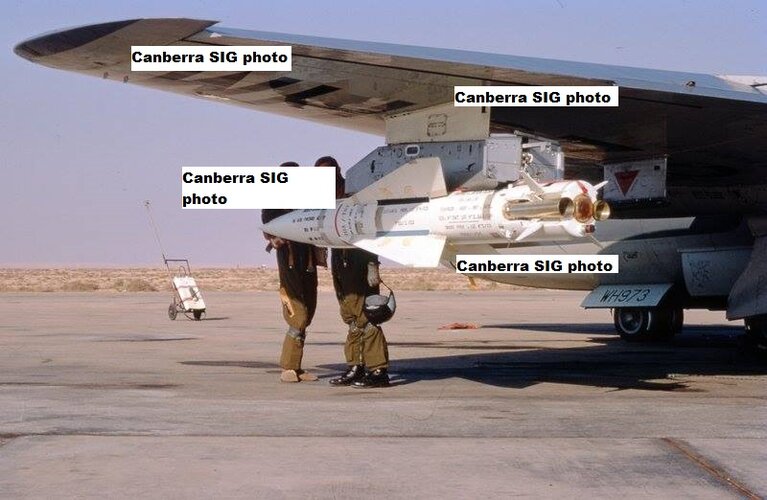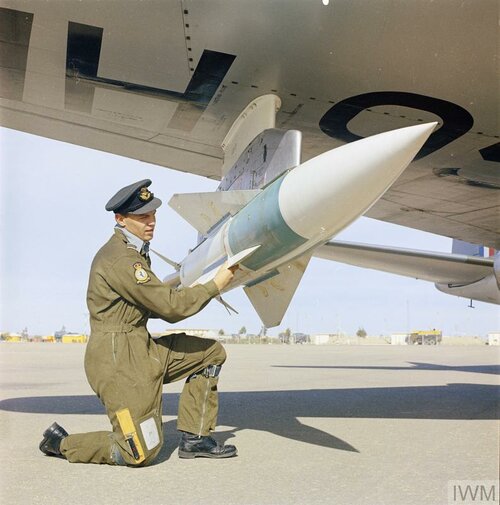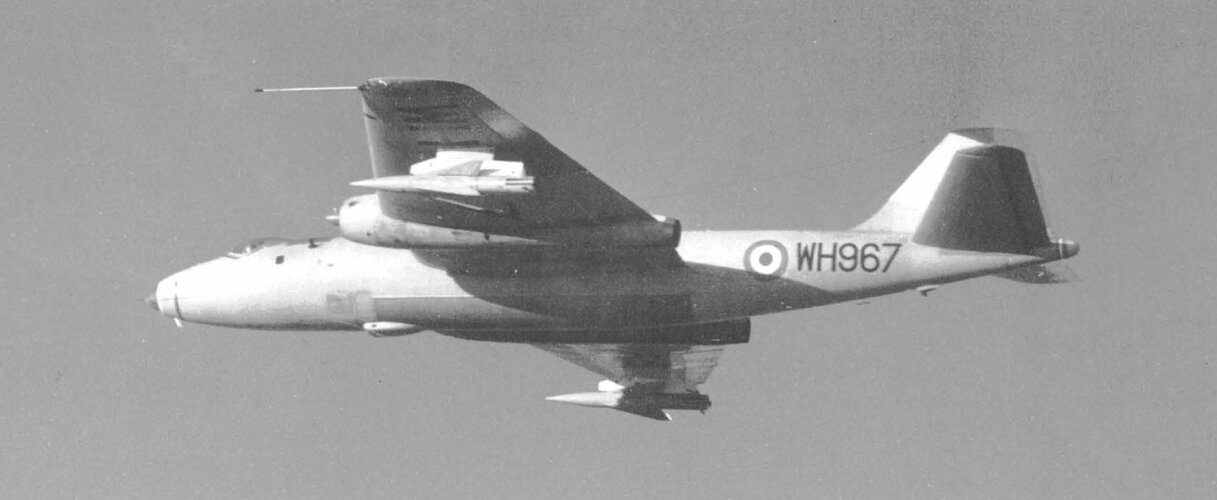The AS.30
In 1965, it was decided to equip two of the ASW's unit, No.32 and 73 squadrons, with French air-to-surface (ASM) missiles, the AS.30, designed and produced by Nord Aviation, until the formation of the Society Nationale Industrielle Aerospatiale.
Weighing 1,146lb (520kg), the 12 1/4 ft (3.88m) long missile was powered by a dual-thrust solid-propellent rocket motor and had a 510lb (232kg) warhead, which could have a delay or non-delay fuse. It had an accuracy of 30ft (9.14m) at a range of 7 miles (llkm). Trials had been conducted on the Sud-Aviation SO-4050 Vautour and it was operational on the G.A.M. Dassault Etendard IVM.
Over 1,000 AS.30s were purchased by the RAF and, in the spring of 1965, several B.15s were modified at Samlesbury to carry the missile on an adapted underwing pylon. WH966 of No.32 Squadron was used as the AS.30 trials installation and crew familiarization aircraft at Samlesbury, while WH967 was used by Boulton Paul for trials, with a ventral camera housing under the forward section of the bombbay.
The range at El Adam saw the majority of test firings, first by aircraft with one missile and, by the end of 1966, the Canberra Tactical Evaluation Flight (CAN TAC) had cleared the installation for service, with both squadrons' aircraft carrying one under each wing, on the outboard pylons. No.103 MU Akrotiri took responsibility for local modifications and maintenance of AS.30 installations.
Although the missile's manufacturer introduced modifications to increase the weapon's potential, the Canberra's variant remained unchanged, as it proved entirely satisfactory for the operational requirement of the two squadron. No further unit in the ASW were so equipped and, when the two squadrons were disbanded in 1969 - No.32 squadron in February and No.73 squadron in March - that was the finale of the AS.30's service in the Middle
East. However, the missile was also used in the Far East Air Force, where No.45 Squadron was adapted to carry it (see Chapter 10)
Aircraft confirmed as having operated with No.32 Squadron, with aircraft modified to carry AS.30 missiles in italics:
WH947, WH955, WH957, WH960, WH966, WH970, WH971, WH972, WH984, WJ774, WJ776, WJ777, WJ778, WJ787, WJ782, WJ783, WT303, WT369, WT373, XH570
Aircraft confirmed as having operated with No.73 Squadron, With aircraft modified to carry AS.30 missiles in italics:
WH954, WH956, WH961, WH964, WH968, WH973, WH974, WH977, WH981, WH983, WJ760, WJ762





